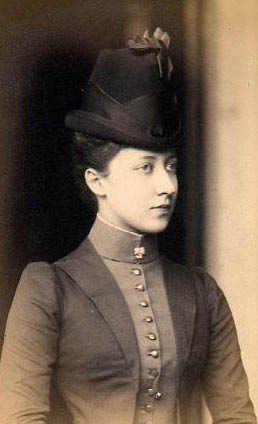Princess Royal
Princess Royal is a title often granted by a monarch to his or her eldest daughter. The title is a gift of the sovereign, not an automatic right, and is both a mark of honor and a position that may carry specific duties and responsibilities. The use of the title varies from country to country, and its duties and privileges can change depending on the monarchy's traditions.
Origin and Usage[edit | edit source]
The title "Princess Royal" was first used in England by King Charles I for his eldest daughter, Princess Mary, in the 17th century. The title mimics that of "Prince Royal," which is not used in the United Kingdom but has been applied in other countries, such as France (Prince Royal) and Portugal (Príncipe Real). The title is not automatically inherited but is granted at the sovereign's discretion. Typically, it is given once the previous holder has died or when the reigning monarch decides to bestow it upon their daughter.
Current and Past Holders[edit | edit source]
As of the last update, the title of Princess Royal in the United Kingdom is held by Princess Anne, the second child and only daughter of Queen Elizabeth II and Prince Philip, Duke of Edinburgh. Princess Anne was granted the title in 1987, and she has been known for her extensive charity work and as a member of the British royal family.
Before Princess Anne, the title was held by several notable figures, including Princess Mary, the daughter of King George V, and Princess Louise, the eldest daughter of Queen Victoria. Each Princess Royal has taken on roles and duties that reflect the needs and customs of their times, often focusing on charitable, military, or cultural engagements.
Duties and Privileges[edit | edit source]
The specific duties and privileges of the Princess Royal vary, but the title often involves representing the royal family at certain public and ceremonial occasions, both within the United Kingdom and abroad. The Princess Royal may also take on patronages and support various charities, organizations, and military regiments. The role is symbolic of the nation's respect and recognition of the royal family's women in public life.
International Equivalents[edit | edit source]
Other monarchies have similar titles or honors for the monarch's eldest daughter. For example, in the Netherlands, the title "Princess of Orange" can be considered an equivalent. However, the use, significance, and duties associated with these titles can vary significantly from one country to another, reflecting each nation's unique traditions and royal protocols.
Controversies and Criticisms[edit | edit source]
The title of Princess Royal, like many aspects of monarchy, has been subject to scrutiny and criticism. Some argue that such titles perpetuate outdated notions of privilege and hierarchy. Others see them as important traditions that link the present with the past and provide a sense of continuity and identity.
Conclusion[edit | edit source]
The title of Princess Royal is a significant honor in the British monarchy, symbolizing the high status of the sovereign's eldest daughter and her role within the royal family and the wider public life of the nation. While the title comes with expectations of public service and royal duties, it also reflects the evolving role of women in the monarchy and the balance between tradition and modernity.
Search WikiMD
Ad.Tired of being Overweight? Try W8MD's physician weight loss program.
Semaglutide (Ozempic / Wegovy and Tirzepatide (Mounjaro / Zepbound) available.
Advertise on WikiMD
|
WikiMD's Wellness Encyclopedia |
| Let Food Be Thy Medicine Medicine Thy Food - Hippocrates |
Translate this page: - East Asian
中文,
日本,
한국어,
South Asian
हिन्दी,
தமிழ்,
తెలుగు,
Urdu,
ಕನ್ನಡ,
Southeast Asian
Indonesian,
Vietnamese,
Thai,
မြန်မာဘာသာ,
বাংলা
European
español,
Deutsch,
français,
Greek,
português do Brasil,
polski,
română,
русский,
Nederlands,
norsk,
svenska,
suomi,
Italian
Middle Eastern & African
عربى,
Turkish,
Persian,
Hebrew,
Afrikaans,
isiZulu,
Kiswahili,
Other
Bulgarian,
Hungarian,
Czech,
Swedish,
മലയാളം,
मराठी,
ਪੰਜਾਬੀ,
ગુજરાતી,
Portuguese,
Ukrainian
Medical Disclaimer: WikiMD is not a substitute for professional medical advice. The information on WikiMD is provided as an information resource only, may be incorrect, outdated or misleading, and is not to be used or relied on for any diagnostic or treatment purposes. Please consult your health care provider before making any healthcare decisions or for guidance about a specific medical condition. WikiMD expressly disclaims responsibility, and shall have no liability, for any damages, loss, injury, or liability whatsoever suffered as a result of your reliance on the information contained in this site. By visiting this site you agree to the foregoing terms and conditions, which may from time to time be changed or supplemented by WikiMD. If you do not agree to the foregoing terms and conditions, you should not enter or use this site. See full disclaimer.
Credits:Most images are courtesy of Wikimedia commons, and templates Wikipedia, licensed under CC BY SA or similar.
Contributors: Prab R. Tumpati, MD






